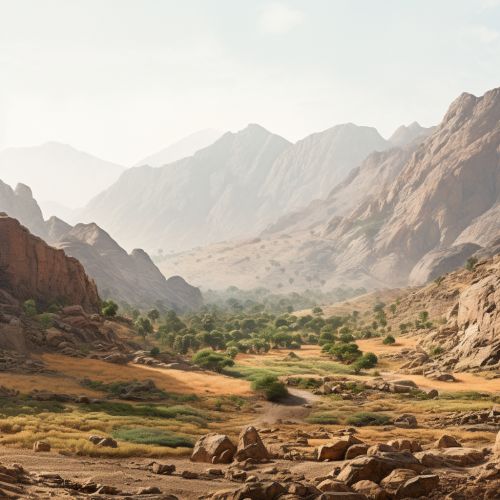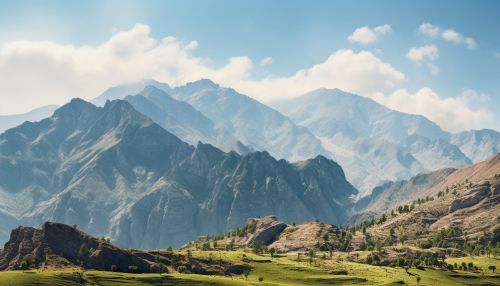Oman
Geography
Oman, officially known as the Sultanate of Oman, is located on the southeastern coast of the Arabian Peninsula. The country shares borders with the UAE, Saudi Arabia, and Yemen. It also has marine boundaries with Iran and Pakistan. The country's strategic location on the Arabian Sea has played a significant role in its history and development.


Oman's topography is diverse, featuring a wide range of geographical features. The country is characterized by a desert plain extending from the northern coast to the southern coast. The Al Hajar Mountain range, the highest in the eastern Arabian peninsula, runs in a belt from the northwest to the southeast. The country also features a series of lagoons and beaches along its coastline, and an expansive desert area known as the Empty Quarter.
History
Oman's history dates back to the Stone Age, with the earliest human habitation in the Arabian Peninsula originating from this region. The country's strategic location on the Arabian Sea made it a vital part of the ancient Silk Road. It was an important center for trade and commerce, with goods such as frankincense, myrrh, and spices being traded.
In the 7th century, Oman adopted Islam, which continues to be the state religion. The country played a significant role in the spread of Islam, with Omani sailors and traders taking the religion to various parts of East Africa.
The country was occupied by the Portuguese in the 16th century who were interested in its strategic location. However, they were expelled in the 17th century by the Omani tribes. The country then established an empire of its own, with territories stretching from modern-day Iran and Pakistan, all the way to Zanzibar in Africa.
In the 19th century, the country came under British influence, becoming a protectorate of the British Empire. It gained full independence in 1971 and has since developed into a stable and prosperous nation under the rule of Sultan Qaboos bin Said al Said, who ruled from 1970 until his death in 2020.
Politics
Oman is a monarchy, with the Sultan serving as the head of state and the head of government. The current Sultan is Haitham bin Tariq, who assumed the throne following the death of his cousin, Sultan Qaboos, in 2020.
The Sultan has absolute power and his decisions are not subject to any form of judicial review. He appoints a cabinet known as the Council of Ministers to assist him in his duties. The country also has a bicameral legislature, the Council of Oman, which consists of the State Council and the Consultative Council.
Oman's legal system is based on English common law and Islamic law. The judiciary is independent and the rule of law is generally respected. The country has been praised for its peaceful transition of power and its efforts to modernize its political system.
Economy
Oman's economy is heavily dependent on oil exports, which account for the majority of the government's revenue. However, in recent years, the government has been implementing a diversification strategy aimed at reducing the country's dependence on oil. This strategy, known as Vision 2040, focuses on developing other sectors such as tourism, fishing, mining, and manufacturing.
The country has a free-market economy, with a significant role played by the state. Oman's currency is the Omani rial, and the country is a member of the WTO and the GCC.
Despite its dependence on oil, Oman has managed to maintain a relatively low level of inflation and unemployment. The country has also made significant strides in human development, with improvements in education, healthcare, and living standards.
Culture
Oman's culture is deeply rooted in the Islamic traditions that shape Oman's way of life. Arabic is the official language, although English is widely spoken. The Omani dialect of Arabic is distinct from other forms of Arabic spoken in the Gulf region.
Omani cuisine is diverse and has been influenced by many cultures. It features a mix of spices and flavors from India, Persia, and East Africa. Dates, rice, and fish are staple foods in the Omani diet.
Oman is known for its traditional music, dance, and art. The country's most famous form of music is the Khaliji, a type of folk music that originated in the Persian Gulf region. Oman also has a rich tradition of storytelling, with folk tales and legends passed down through generations.
